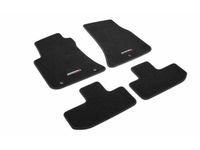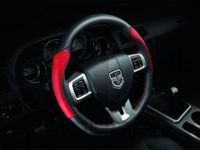- Live Chat
- 1-888-511-3595

Why choose MoparPartsGiant
- Fast Delivery
Your Dodge Challenger deserves only genuine parts from MoparPartsGiant.com. There's zero risk involved when buying from us because all our Dodge Challenger parts are expedited directly from authorized dealers and backed by the manufacturer's warranty. For years, we've been the #1 online parts store. Interested in faster shipping? We offer expedited shipping on corresponding orders!
- Dedicated Service
Our outstanding customer service team is here to help you by email, live chat, or phone call with any inquiries regarding your purchase. Dedicated representatives are standing by to assist you with your shopping needs. With a complete Dodge Challenger parts catalog and a full selection of inventory, your parts are ready to be expedited anywhere in the nation without delays.
- Unbeatable Prices
For any genuine parts you need for standard maintenance or repair, we carry them. With our unbelievably low prices on parts, you won't go anywhere else for Dodge Challenger parts. We are your one-stop shop for Dodge Challenger parts without breaking the bank!
Popular Genuine Dodge Challenger Parts
- Engine Parts View More >
- Electrical Parts View More >
- Fuel Parts View More >
- Body - Sheet Metal Except Doors Parts View More >
- Cooling Parts View More >
- Steering Parts View More >
- Interior Trim Parts View More >
- Transmission Parts View More >
- Brakes Parts View More >
- Exhaust Parts View More >
- Doors, Door Mirrors And Related Parts View More >
- Suspension & Drive Parts View More >
Shop Genuine Dodge Challenger Parts with MoparPartsGiant.com
The Dodge Challenger, an American classic, has seen three distinct generations of production since its introduction. The first generation, from 1970 to 1974, was developed on the Chrysler Electronics platform as a hardtop convertible, sharing components with the Plymouth Barracuda. Carl Cameron, who also designed the 1966 Dodge Charger, was responsible for this iconic design. The second generation, spanning from 1978 to 1983, was a transformed version of the Mitsubishi Galant Lambda, serving as an economical coupe. The inaugural Challenger, launched in 1969, was one of two Chrysler vehicles using electronic bodywork. The 1970 model featured a grille design based on an early prototype of the 1966 Charger and was initially planned to have a turbocharged engine. Despite its late entry into a declining Pony Car segment, the Challenger found its niche with distinctive features like a fiberglass front spoiler, vibrant identification graphics, and thick dual side stripes. A unique offering for the 1970 model year was the race-ready Dodge Challenger T/A, built for the Sports Car Club of America's Trans American Sedan championship. The road versions utilized a 340 Six Pack engine, with three two-liter carburetors mated to an aluminum intake manifold, while race versions were equipped with a downsized 340. Notably, the Challenger has always stood for performance, its longevity proving its enduring appeal.
Dodge Challenger owners often encounter cooling system and electrical issues over time. As mileage accumulates, the cooling system may fail, leading to frequent coolant leakages and resulting in engine overheating, with steam often visible from the radiator. The water pump should be inspected in such cases, checking for a loose pulley or worn-out gasket. The Challenger also faces electrical problems, such as difficulty starting, electrical components ceasing to work, or the key getting stuck in the ignition. These symptoms indicate potential issues with the ignition lock assembly or ignition switch, and high-usage parts like the door lock actuator or headlight switch may also wear out. Moreover, a malfunctioning hood that closes slowly or unexpectedly, or fails to stay up, suggests the need to check the hood latch. Regular maintenance of these issues can prolong the lifespan of your Dodge Challenger.
Every OEM component is subjected to rigorous quality checks, assuring its safety, resilience, and performance that aligns with your original parts. Looking for cost-effective OEM Dodge Challenger parts, such as Air Conditioners & Heater, Differential And Drive Line? Look no further than our extensive inventory of genuine Dodge Challenger parts. Priced competitively, our parts are protected by the manufacturer's warranty, ensuring value for your money. Enjoy a seamless shopping experience with our quick delivery service and hassle-free return policy. We invite you to shop with certainty and satisfaction.
Dodge Challenger Parts Questions & Answers
- Q: How to test and remove Fuel Injector and Fuel Rail on Dodge Challenger?A: To perform an injector resistance test, remove the engine cover and disconnect the fuel injector connector. Use a DVOM to measure the resistance. If not within spec, replace it. For V6, relieve fuel system pressure and disconnect battery cable. Remove air intake duct and upper intake manifold. Disconnect fuel supply line and electrical connectors from injectors. Clean debris and remove fuel rail and injectors. Remove safety clips and O-rings. Coat new O-rings with oil and install. Install injectors into fuel rail and tighten bolts. For V8, relieve fuel system pressure and disconnect battery cable. Remove air intake duct and housing, disconnect PCV hose and fuel supply line fitting. Disconnect electrical connectors from all eight injectors. Remove injector retainer clip and pull injector out. Discard O-rings and install new ones. Install injectors into fuel rail and tighten bolts. Turn ignition switch to On to activate fuel pump and check for leakage.
- Q: How to Replace a Blower Motor Resistor,Blower Motor or Power Module on Dodge Challenger?A: Disconnect the negative battery cable and IBS connector (if equipped). Remove the lower instrument panel insulator and blower motor resistor/power module. Replace the entire unit if either fan or motor is damaged. Installation is reverse of removal.
- Q: How to remove and install the Oil Cooler on a Dodge Challenger?A: Raise the vehicle and support it securely. Drain the cooling system and remove the oil filter. Squeeze the hose clamps and detach the hoses. Unscrew the bolt and detach the oil cooler. Clean the mating surfaces and use a new gasket. Align the cut-out and tab on the oil pan. Tighten the bolt and install a new oil filter. Refill the cooling system and check the oil level.






























































